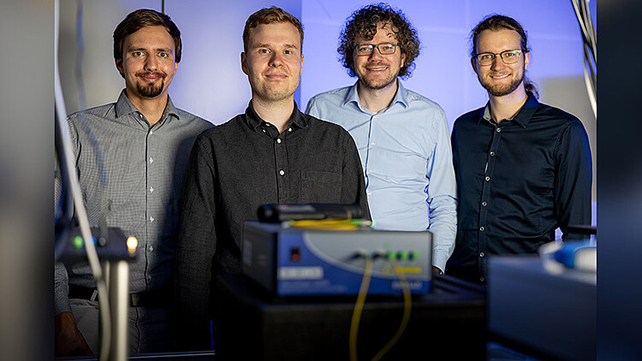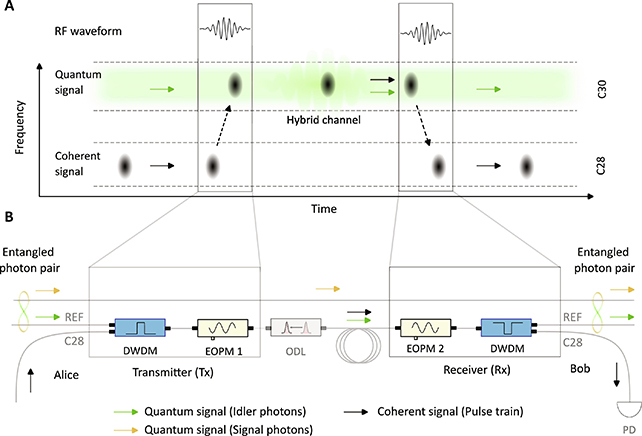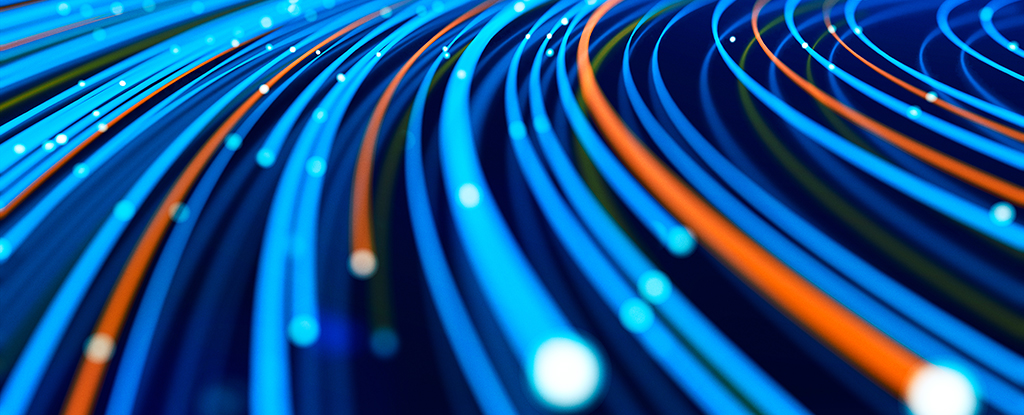Products You May Like
While the idea of a quantum internet has a huge amount of potential, getting it hooked up to the regular old internet has its challenges.
Now a new study hints at how existing and future networks could be combined.
An experiment conducted by researchers from Leibniz University Hannover in Germany show how quantum information and the classic 1s and 0s of conventional data could be beamed down the same optical fiber.
Potentially, that means an internet that’s almost hack-proof – and the possibility of using existing infrastructure to connect multiple quantum computers in networks that might one day provide a unique means of processing power that could solve otherwise insurmountable computing tasks.

Quantum communication requires closely-related waves of light to be sent in isolation to protect their delicately entangled relationship, which means they need to be transmitted separately to conventional data-carrying light waves. That makes it tricky to send everything down the same pipe.
“To make the quantum internet a reality, we need to transmit entangled photons via fiber optic networks,” says physicist Michael Kues, from Leibniz University Hannover. “We also want to continue using optical fibers for conventional data transmission.”
“Our research is an important step to combine the conventional internet with the quantum internet.”
The team used a specially designed device to apply what’s known as the serrodyne technique, which shifts the phase of the signals in the optical fiber to put the quantum data and the classical data on the same frequency channel.
However, it does so in a way where the data streams don’t interfere with each other, preserving the entangled state of the quantum stream. At the other end of the network, the streams can be separated out again, so both types of data can be sent and received – a hybrid approach to communications.

It’s the first time scientists have been able to send entangled light with non-entangled data using the same frequency channel in optical fiber. As these optical fibers already form the backbone of our internet, it means quantum technologies could be adopted more quickly.
“The entangled photons block a data channel in the optical fiber, preventing its use for conventional data transmission,” says physicist Jan Heine, from Leibniz University Hannover.
There remain lots of challenges to overcome: research is continuing to try to get quantum information transferred across longer distances without breaking up, and to find ways to manage traffic over existing networks.
However, if we can get the quantum internet up and running, it promises to add an unbeatable layer of super-secure protection – data that simply disintegrates if bad actors attempt to intercept it – on top of the internet we know today.
“Our experiment shows how the practical implementation of hybrid networks can succeed,” says Kues.
The research has been published in Science Advances.
